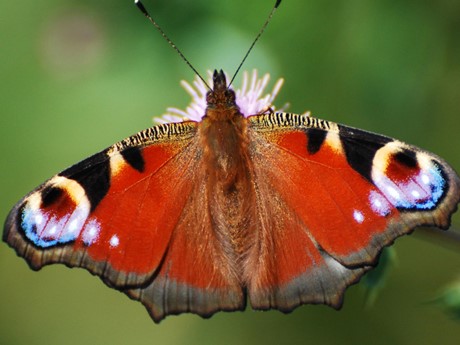Volunteer Spotlight: Anna
Alex Marshall, 03/06/2024
Nature’s Calendar is a citizen science project. That means the data is collected from people of all ages, backgrounds and abilities, and not necessarily by people who are scientists by profession (although, scientists can of course take part, too!). Anyone can volunteer to become a citizen scientist, and every single Nature’s Calendar volunteer adds vital information to the database.
The dedication of some volunteers has been especially important, as these people have been recording the changing seasons with Nature’s Calendar for 20 years or more, some have even been recording since the very beginning in the year 2000!
Introducing Anna
One of those dedicated volunteers is Anna Newson. Anna is from Bath, and has lived in Newcastle upon Tyne since the mid 1980s, she has been recording since 2001 and has kindly offered to answer a few questions about her experience as a Nature’s Calendar recorder.
Since 2001, Anna has submitted around 2500 records with Nature’s Calendar spanning all 8 of the optional species groups. Over 1500 of those records have been for tree and shrub species and around 400 have been bird records, with insects and flowers being the next popular type of species that Anna has recorded over the years.
It’s records like Anna’s that become so important in studying the effects of climate change on our local wildlife. Short-term records are useful in studying the effects of weather fluctuations, but we need to be able to see long-term changes over several years in order to study the effects of a changing climate.

Hawthorn. Credit: John Bridges/WTML – Anna’s most recorded shrub species.

Blackbird. Credit: John Bridges/ WTML– Anna’s most recorded bird species

Horse Chestnut. Credit: John Bridges/WTML – Anna’s most recorded tree species
The interview
We reached out to Anna to learn more about her experience as a Nature’s Calendar volunteer:
When did you start recording for Nature’s Calendar?
I started with Nature's Calendar in 2001 but got interested in the topic in the 1970s living in Mid Wales. An evening class in villages spread West to East across Mid Wales that my husband was teaching, recorded dates of spring flowers across Montgomeryshire / Powys over several years.
Why do you record for Nature’s Calendar?
I'm interested in the natural world and a keen gardener, allotment holder, bird recorder (BTO garden birdwatch, Northumberland and Tyneside Bird Club monthly records) and red kite monitor in SW Northumberland - so am aware of the changes throughout the year and also out and about a lot!
Have you noticed any changes in spring and autumn over the time that you’ve been recording?
Not really, as particularly springs in the North East have been very variable with occasionally late frosts. I don't check or attempt to analyse my past records. Friends say certain migrant birds often come one week early but there is a wide band over when they arrive and leave and you need to be in the right place / right time to make the observations. It helps more recently being part of a large group chat for Northumberland. Note that we're unlikely ever to get Turtle Dove or Nightingale in Northumberland and Cuckoo is no longer anywhere near urban areas (in which I now live) although fairly plentiful in the moorland parts.
Seen as Anna doesn't attempt to analyse her records, we thought it might be nice to make few graphs from her data on her behalf:

Figure 1. Anna’s Horse chestnut budburst dates

Figure 2. Anna’s Horse chestnut first leaf dates

Figure 3. Anna’s hawthorn first flowering dates

Figure 4. Anna’s first recorded swallow dates
Do you have a favourite species or special tree, for example, that you have been recording? Why is it a favourite/special species to you?
Not really! I have moved 3 times within the City of Newcastle over the time I've been recording but cover roughly the same areas. Flowers are the easiest to check as I grow most of them! I am out most weeks birding with friends and checking red kites, so I am constantly observing and aware of migrations going on around and the status of flower, fruit and tree development.
What would you say to other people that are considering becoming a recorder for Nature’s Calendar?
It keeps you alive and aware of the natural world and the rhythms of the changes. Constantly observing the seasons as they progress through the year is never dull as there is always something happening.
Thank you, Anna, and thank you to all of our wonderful Nature’s Calendar volunteers! Whether you have sent in 1 record or 1000 records – your contribution is so important, THANK YOU.
If you have been inspired by Anna to get involved with Nature’s Calendar, why not begin by registering for an account and reading more about how to get started, or watching our recent webinar with Liz Bonnin.
